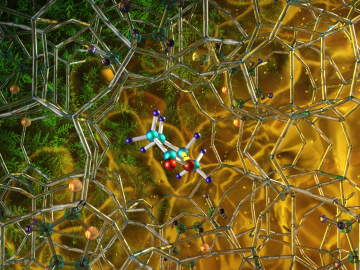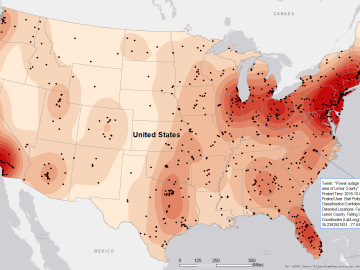
Filter News
Area of Research
News Type
News Topics
- (-) 3-D Printing/Advanced Manufacturing (1)
- (-) Bioenergy (2)
- (-) Cybersecurity (1)
- (-) Grid (1)
- Artificial Intelligence (1)
- Big Data (1)
- Biomedical (4)
- Clean Water (1)
- Composites (1)
- Computer Science (4)
- Energy Storage (3)
- Environment (4)
- Machine Learning (2)
- Materials Science (2)
- Microscopy (1)
- Nanotechnology (1)
- Neutron Science (26)
- Nuclear Energy (2)
- Physics (3)
- Quantum Science (1)
- Security (2)
- Transportation (2)
Media Contacts

Illustration of the optimized zeolite catalyst, or NbAlS-1, which enables a highly efficient chemical reaction to create butene, a renewable source of energy, without expending high amounts of energy for the conversion. Credit: Jill Hemman, Oak Ridge National Laboratory/U.S. Dept. of Energy

Oak Ridge National Laboratory will give college students the chance to practice cybersecurity skills in a real-world setting as a host of the Department of Energy’s fifth collegiate CyberForce Competition on Nov. 16. The event brings together student teams from across the country to compete at 10 of DOE’s national laboratories.

Gleaning valuable data from social platforms such as Twitter—particularly to map out critical location information during emergencies— has become more effective and efficient thanks to Oak Ridge National Laboratory.

Scientists at the Department of Energy’s Oak Ridge National Laboratory have created a recipe for a renewable 3D printing feedstock that could spur a profitable new use for an intractable biorefinery byproduct: lignin.


